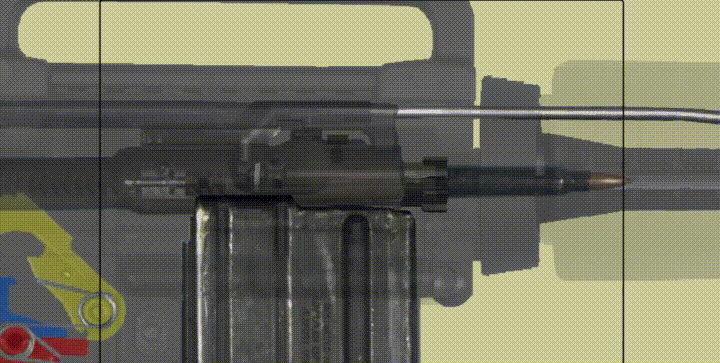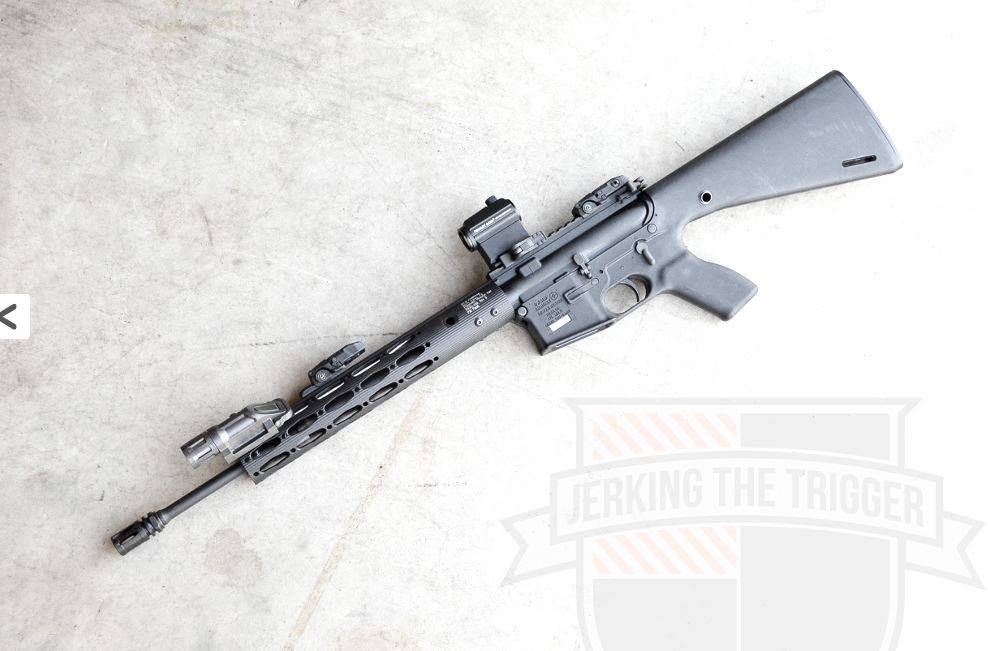
The AR-15 and M16 rifles are iconic in the firearms community. Both serve distinct roles yet stem from a common design by Eugene Stoner. The civilian AR-15 and the military-grade M16 have evolved significantly, reflecting their respective uses. This article explores the differences between these rifles and examines how Faxon Firearms narrows the performance gap with high-quality components.
Differences Between The AR-15 and M16
The AR-15 and M16 rifles derived from Eugene Stoner’s original design have evolved to meet distinct needs within civilian and military contexts. Initially, the AR-15 was designed as a select-fire rifle capable of semi-automatic and fully automatic firing modes. It evolved into the M16 when the U.S. military adopted it in the early 1960s. The transition marked the beginning of the AR-15’s designation as a military rifle, leading to the creation of the M16 variant with specific modifications for military use.
The M16, known for its 20-inch barrel and select-fire capability, has undergone several updates, including the M16A1 with a forward assist and chrome-plated bore, and the M16A2, which introduced a 3-round burst mode.
In contrast, the AR-15 has transitioned into a primarily semi-automatic civilian rifle. It typically features a 16 to 20-inch barrel with a twist rate optimized for the .223/5.56mm cartridge, making it suitable for various shooting activities from home defense to sports shooting. The AR-15’s design allows for significant customization, supported by a wide array of aftermarket parts and accessories, enhancing its appeal among gun enthusiasts.
Key functional distinctions include the firing capabilities; the AR-15 is restricted to semi-automatic fire, making it compliant with civilian firearm regulations, whereas the M16 includes options for semi-automatic, burst, or fully automatic fire, catering to varied military operational requirements.
The M16 also incorporates features like a longer sight radius for enhanced accuracy at greater distances, a heavier barrel for sustained firing, and military-specific components like a collapsible stock and flash suppressor optimized for combat durability and reliability.
The design differences extend to the rifles’ receivers; the M16’s bolt carrier is designed for semi-automatic and automatic fire and includes an auto sear enabling automatic fire. In contrast, the AR-15’s bolt carrier and upper receiver components are tailored for reliable semi-automatic action. Both models can accommodate a Picatinny rail for attachments, though their applications differ with the AR-15’s recreational use versus the M16’s combat readiness.
Overall, while the AR-15 and M16 share a common lineage and many physical characteristics, their adaptations reflect their intended civilian rather than military uses, providing both platforms with unique advantages tailored to their specific environments.
Faxon’s Role in Bridging the Gap
Faxon Firearms has been pivotal in enhancing the AR-15’s capabilities to match those of the M16 closely. By integrating military-grade barrel technologies, advanced gas systems, and durable bolt carrier groups, Faxon has elevated the AR-15’s performance to withstand conditions previously exclusive to the M16.
Upgrades like those from Faxon increase the AR-15’s reliability and lifespan and enhance its performance in demanding settings. These improvements make the AR-15 suitable for more rigorous activities, traditionally reserved for its military counterpart.
Faxon 5.56 M16 Bolt Carrier Group
The Faxon 5.56 M16 Bolt Carrier Group (BCG) is built for durability and performance. It features a nitride finish for corrosion resistance and a robust construction that supports semi-automatic and automatic firing.

Made with 9310 tool steel, the bolt undergoes a complete MIL-SPEC heat treatment and shot peening to ensure maximum durability. It includes a magnetic particle inspection (MPI) to guarantee that each component is defect-free. The carrier body is super finished to reduce friction and enhance the smoothness of operation.
Designed to handle the rigorous demands similar to those of an M16, this BCG is equipped with a salt bath nitrided bolt and carrier, an S7 extractor, and full-auto compatibility. It’s built to ensure reliable action for high-pressure rounds and rapid-firing scenarios, making it ideal for upgrading AR-15 rifles to near M16 standards.

The Faxon M16 bolt carrier group is one of the easiest components to upgrade on any AR-15. This simple upgrade is crucial for shooters looking to enhance their rifle’s performance for various uses such as competitive shooting, hunting, or home defense.
Faxon 5.56 Pencil Barrels
The Faxon 5.56 pencil barrels are notably lightweight, improving the AR-15’s handling. This design mirrors the balance sought in military rifles like the M16, optimizing for rapid movement and sustained performance in field conditions.
Crafted from 4150 certified steel with a nitride finish, these barrels meet military specifications for durability and reliability, akin to those required for the M16.

Designed for precision, the 16″ length ensures an optimal balance between maneuverability and accuracy, features essential for military engagement similar to the M16’s operational standards.
By integrating military-grade materials and specifications, Faxon’s pencil barrels elevate the AR-15 to perform under conditions similar to the M16, ensuring reliability and durability in various operational environments.
Barrel Twist Rates
The original M16 featured a 1:14 twist rate optimized for 55-grain bullets, while later models like the M16A2 adopted a 1:7 twist rate suited for heavier NATO rounds. This change addressed the need for stability with heavier 62-grain SS109 and long L110 tracer bullets.
Faxon Firearms has adopted a 1:8 twist rate for their barrels, striking a balance between the capabilities of earlier and later M16 models. This twist rate is versatile enough to handle a broad range of bullet weights from 55 grains up to 77 grains effectively.
Using a 1:8 twist rate, Faxon’s barrels offer enhanced performance across various ammunition types, making the AR-15 more adaptable to different shooting conditions and requirements. This capability allows AR-15 users to achieve a performance previously limited to other iterations of the M16, thus bridging the gap in functionality and versatility.
Practical Applications
With enhancements from companies like Faxon, the AR-15 has become a more versatile tool, capable of more than just recreational shooting. Law enforcement agencies increasingly use it for its reliability and adaptability to various situations.
The upgraded AR-15s are competitive alternatives to the M16, especially when non-military users require robust performance and reliability.
Conclusion
The distinction between the AR-15 and M16 is significant, yet the gap is narrowing thanks to advancements in firearm technology by companies like Faxon Firearms.
These improvements enhance the AR-15’s capabilities and ensure it remains a reliable choice for recreational shooters and professionals. As the lines continue to blur, the enhanced AR-15 stands out as a testament to innovation in firearm technology and accessibility.







Leave a Reply
Your email address will not be published. Required fields are marked *